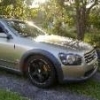Top Intake On Std Airbox
Announcements
-
Similar Content
-
Latest Posts
-
By Murray_Calavera · Posted
Can you export your tune and upload it here for us to look at? Would be much quicker for us to diagnose that way. -
Injector Dead Time Table^^ No the car just cranks and cranks and never catches. It will for 1 second act like its catching but die then cranks and cranks and never starts. If i push the gas pedal/air-pedal/give it max throttle then it will start.
-
Re the injectors, yes it would missfire but what you are looking for is current behaviour (no start without full throttle) stops and the car starts without throttle (then idles with a miss)
-
Ok so my table is in ms? Ill try to unplug them one at a time. If i unplug 1 injector wont it be misfiring? The gas pedal should be called the "air-pedal" 🤣
-
My tuner gave me a few tunes to try while we were troubleshooting this issue, so i believe this was one of the tables where he modified it to be extremely on the high end just to see if it helped. What does this table mean? the milliseconds that the injectors are open between 0-400RPMs at the varying coolant temperatures?
-




Recommended Posts
Create an account or sign in to comment
You need to be a member in order to leave a comment
Create an account
Sign up for a new account in our community. It's easy!
Register a new accountSign in
Already have an account? Sign in here.
Sign In Now